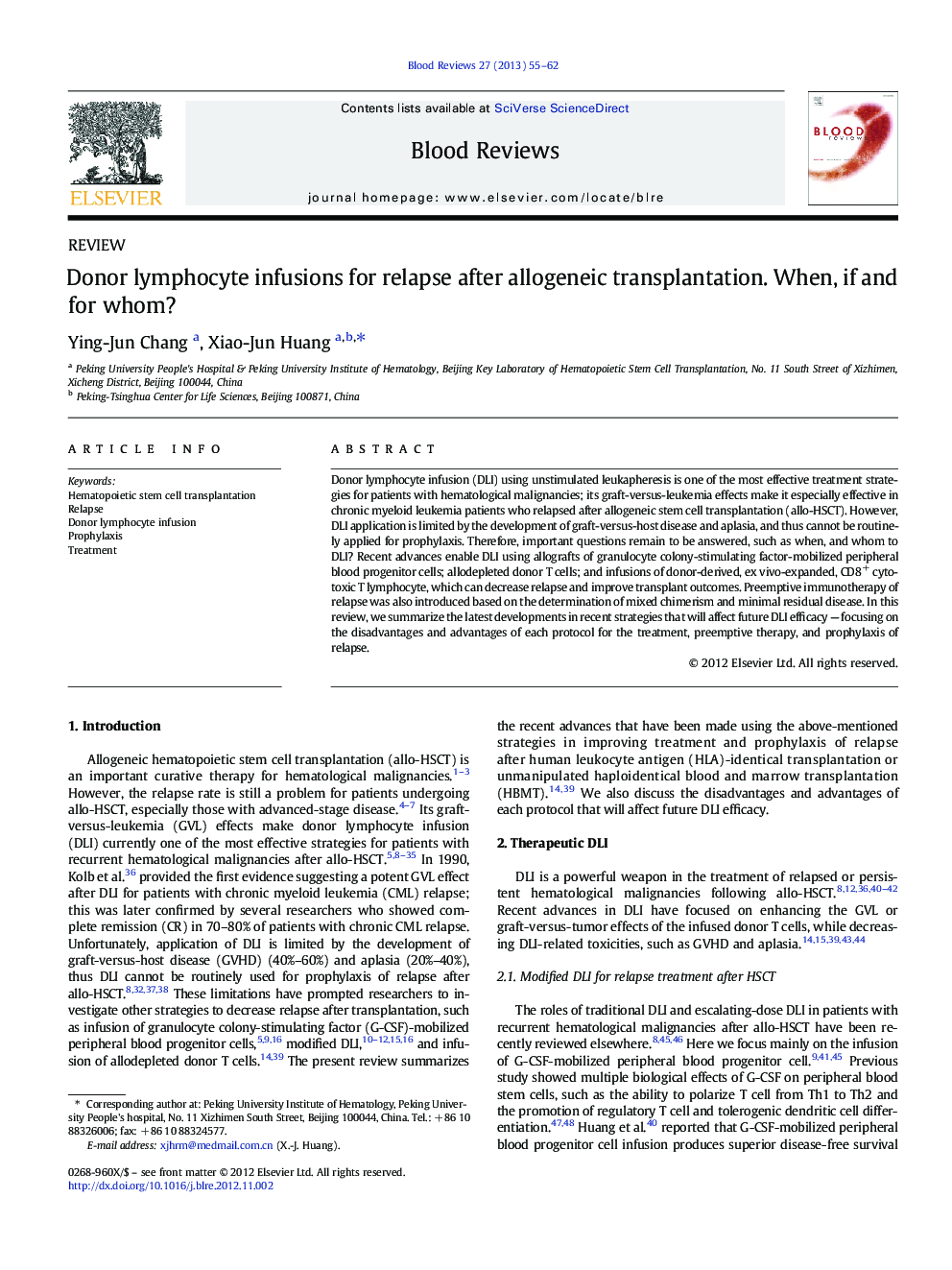| کد مقاله | کد نشریه | سال انتشار | مقاله انگلیسی | نسخه تمام متن |
|---|---|---|---|---|
| 10895792 | 1083506 | 2013 | 8 صفحه PDF | دانلود رایگان |
عنوان انگلیسی مقاله ISI
Donor lymphocyte infusions for relapse after allogeneic transplantation. When, if and for whom?
ترجمه فارسی عنوان
تزریق لنفوسیت های دونر برای عود پس از پیوند آلوژنیک. وقتی، برای و برای چه کسی؟
دانلود مقاله + سفارش ترجمه
دانلود مقاله ISI انگلیسی
رایگان برای ایرانیان
کلمات کلیدی
پیوند سلول بنیادی هماتوپوئیت، تسکین دهنده تزریق لنفوسیت دونر، پیشگیری رفتار،
موضوعات مرتبط
علوم زیستی و بیوفناوری
بیوشیمی، ژنتیک و زیست شناسی مولکولی
تحقیقات سرطان
چکیده انگلیسی
Donor lymphocyte infusion (DLI) using unstimulated leukapheresis is one of the most effective treatment strategies for patients with hematological malignancies; its graft-versus-leukemia effects make it especially effective in chronic myeloid leukemia patients who relapsed after allogeneic stem cell transplantation (allo-HSCT). However, DLI application is limited by the development of graft-versus-host disease and aplasia, and thus cannot be routinely applied for prophylaxis. Therefore, important questions remain to be answered, such as when, and whom to DLI? Recent advances enable DLI using allografts of granulocyte colony-stimulating factor-mobilized peripheral blood progenitor cells; allodepleted donor T cells; and infusions of donor-derived, ex vivo-expanded, CD8+ cytotoxic T lymphocyte, which can decrease relapse and improve transplant outcomes. Preemptive immunotherapy of relapse was also introduced based on the determination of mixed chimerism and minimal residual disease. In this review, we summarize the latest developments in recent strategies that will affect future DLI efficacy - focusing on the disadvantages and advantages of each protocol for the treatment, preemptive therapy, and prophylaxis of relapse.
ناشر
Database: Elsevier - ScienceDirect (ساینس دایرکت)
Journal: Blood Reviews - Volume 27, Issue 1, January 2013, Pages 55-62
Journal: Blood Reviews - Volume 27, Issue 1, January 2013, Pages 55-62
نویسندگان
Ying-Jun Chang, Xiao-Jun Huang,
